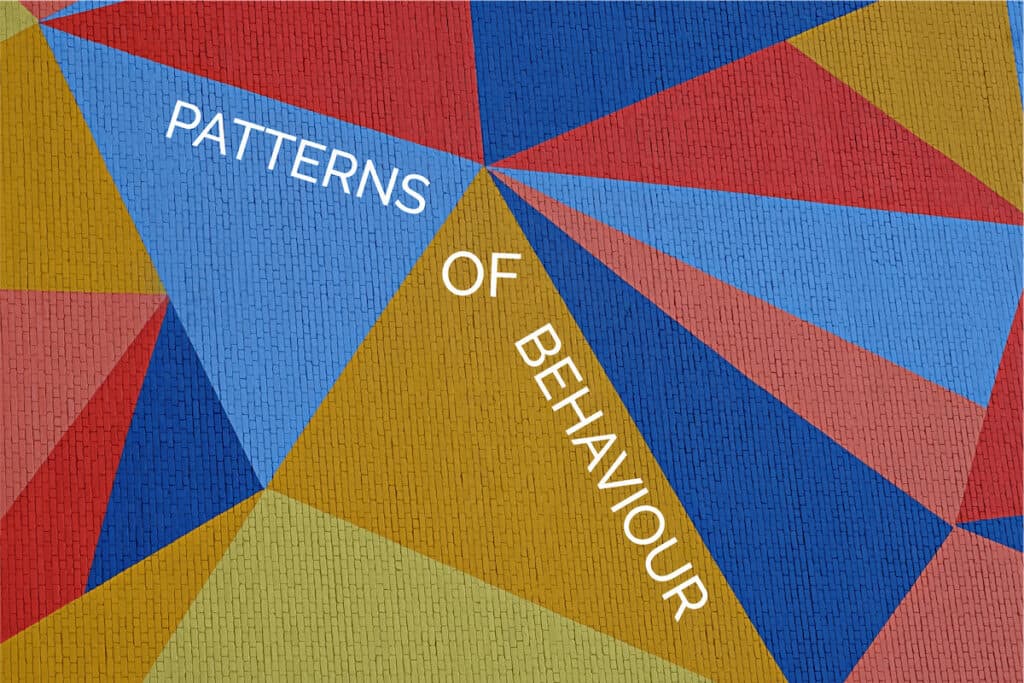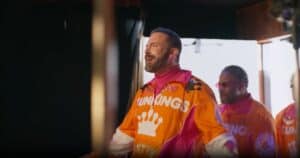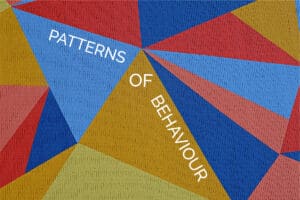On a warm summer’s night watching the world’s number one tennis player get knocked out in the quarter finals (the first time since 2005 that we haven’t seen a Federer, Nadal or Djokovic in the finals), whilst being served some spectacular and joyful ads I realised a brand can never go on holidays!
Every move taken and not taken, forms the identity of a brand. At times we can overthink what a brand is and how we can develop/evolve a brand – which is why I love this very simple yet profound definition: “A brand is a pattern of behaviour” (slideshare.net/coolstuff/the-brand-gap). Not a logo, an identity or a product.
What’s exciting about this definition is it opens the door to understanding the full depth and breadth of what a brand truly is – in one sentence! Once you have this understanding you can’t help but look beneath the surface of the brands we know, work with or own. Observing the eco systems they reside within and asking: Who is the brand? Are we happy with who it is? What do we want the brand to be?
Recently I have been researching STEM (Science, Technology, Engineering, Maths) organisations in the space of DEI (Diversity, Equity and Inclusion). In this industry, like many Australian industries, they have a massive skills gap. One of the contributors, is that the working environment STEM exists in, has a diversity deficiency. Starting with female representation – Only 15% of STEM-qualified jobs are held by women. In 2022, the gap between women’s and men’s pay in STEM industries was $27,012, or 17%. (The state of STEM gender equity in 2023, Australian Government).
If you are an organisation in STEM and you want to change these numbers, then what patterns of behaviour need to be changed to get there? Some organisations are accelerating behaviour change by publicly sharing their data, establishing clear targets, rethinking how they support diversity groups in their organisation, providing leadership development, running programs to address unconscious bias, implementing allyship groups – just to name a few.
John Deree, a technology company, since becoming committed and focused on diversity and inclusivity have reported: enhanced innovation and creativity, improved problem solving and organisational learning and growth. They have also reported 47% of employees taking extended leave to care for young children are male. (https://www.dca.org.au/news/case-study/case-study-john-deere)
What’s really interesting about all this is that each brand has a certain ‘pattern of behaviour’ – one that is always on display for everyone to see. It doesn’t just stop there. Your brand, together with other brands in your industry, create an ‘industry pattern of behaviour’. Perhaps you feel limited by this when you look around and observe the other players (who may be lacking in areas of diversity, innovation, creativity, genuine care and responsibility of people, etc), but there is a definite flip side: The opportunity for one player to change the ‘industry pattern of behaviour’. And it only takes one player.
Examples of one player influence on market behaviors include: Apple iphone touch screen inspired Samsung and Google to follow suit. Tesla electric cars inspired the likes of Ford, GM and Volkswagen. Unilever’s Sustainable Living Plan (which includes diversity and inclusion as a key component) inspired other major international food groups: P&G, Mars, Nestle, Coca-Cola-Company.
When the ‘industry patterns of behaviour’ are thriving (i.e. progressive whilst ensuring stakeholder receptivity and capacity) – it’s a sign the industry is in good shape. Otherwise the alternative is being the best house on a bad street, which leads to complacency, superiority, false confidence and limited awareness.
I have been in two weeks of Australian Open bliss! If you look at the AO’s pattern of behaviours, you can quickly understand and appreciate the values of the brand – and why they continue to attract record crowds.
- The tournament director is always visible and has established good relationships with key stakeholders.
- The player (customer group) love coming to Australia – despite the travel distance
- Equity, diversity and inclusion is high on the priority list. They were the first grand slam to provide equal prize money for female players and the first to feature wheelchair events.
- The sponsors (customer group) are strongly integrated into the experience. AO and their partners go to great lengths to create connections.
- They are committed to environmental sustainability, with an evolving list of eco-friendly practices and initiatives.
- There is a modern and progressive feel to the AO. Each year they step it up and as a result are known for being on the forefront of new technology (e.g. Line calling systems, improved data analytics).
- They seek feedback. Demonstrating their desire for continuous improvement. This year some of the games started extremely late. They acknowledged this issue and will address this for 2025.
As I am writing this list I can’t help but think about the impact this is having on Australia and how the ‘country pattern of behaviour’ is being influenced and inspired by the AO.
Over to you.. What are the patterns of behaviour for your brand and what do you want them to be?
STEP 1: A starting point is to conduct a preliminary audit. What is the existing pattern of behaviour in your organisation. I highly recommend you do this without judgement. It’s simply a ‘stick in the sand’ – observation and data collection exercise. You can look at things like: What are the behaviours of people (across all levels)? What is the position around DEI (diversity, equity and inclusion)? What is the position around ‘return to office’, remote working, hybrid, 4 days weeks? What are the beliefs around productivity and role effectiveness? What data is tracked and shared? What are the business goals and KPIs at each level? What level of responsibility do you take for the people who work in the organisation? How do you support community? How do you resolve conflict? The list will evolve, once you get started.
STEP 2: Give some thought into the future direction. For example, answering the question of how you will continue to grow and evolve as a responsible brand/organisation that contributes to all stakeholders and to a thriving industry? What do we need to do? At this stage put some loose criteria around this.
STEP 3: Conduct research in and outside your industry. Look for the inspiring and aspiring. Look for the companies people want to work for. Who is doing what? What can we learn? How does this compare to our initial thinking? What additional questions should we be asking of ourselves?
STEP 4: Now it’s time to create a more concrete set of criteria. It’s easy to say in one sentence but requires significant dedication. At this stage you are developing your gap analysis (which requires you to conduct a second audit), forward thinking, engagement and ownership, and systems to implement, communicate and track.
One of the best examples of a brand’s lived ‘patterns of behaviour’ is the All blacks. My favourite is the ‘sweeping the sheds’ principle (as described in Legacy, by James Kerr), where the ‘player of the match’ is delegated this role. This one pattern of behaviour teaches humility, leading by example, attention to detail, respect, teamwork and focus.
The small things really do shout volumes when it comes to a brands ‘pattern of behaviour’.






